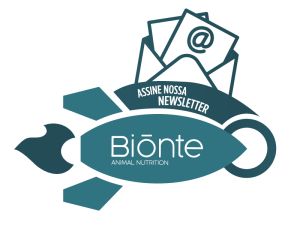Due to the widespread and adaptable nature of fungi, predicting the occurrence of their contamination in food is challenging. The multitude of factors influencing the origin and growth of fungi is highly diverse and variable, wherein alterations in climatic conditions or harvest management can lead to fungal or mycotoxin contamination. Toxins can infiltrate crops at various stages, including harvesting, transportation, and storage. Consequently, the mitigation of ergot mycotoxins contamination in cereals will primarily target both pre-harvest and post-harvest phases. Management of mycotoxins revolves around adopting Good Agricultural Practices, Good Manufacturing Practices, and implementing Hazard Analysis and Critical Control Points (Agriopoulou, 2021).
•Pre-harvest control
The application of pesticidal and fungicidal agents has traditionally been the focus for the control of phytopathogenic fungi and their derived metabolites in food crops However, the current focus is on exploring more environmentally sustainable strategies that effectively combat contamination in agricultural production. One of the possible tools to be used is biological control. The use of biological agents has a limited spectrum of action compared to chemical fungicides, however, biological media can also work quite well if used in conjunction with chemical fungicides. Biological control employs various agents such as yeasts, fungi, bacteria, and enzymes, which can degrade and absorb diverse mycotoxins. When it comes to ergot alkaloids, limited published studies have explored biological control methods. Among these studies, bacteria and fungi like Pseudomonas aureofaciens and Trichoderma lignorum, respectively, have been employed. However, these agents did not yield a significant effect on sclerotia germination (Agriopoulou, 2021).
Similar to fungicides and pesticides, good agricultural practices are employed as techniques to manage fungi and their metabolites in crops. Within the life cycle of fungi belonging to the Claviceps genus, sclerotia play a crucial role. In brief, these structures serve as shelters for the pathogen during hibernation. As the cold spring season approaches, these structures germinate and disperse into the environment (Agriopoulou, 2021). As a beneficial agricultural practice, the use of calcium cyanamide as a fertilizer has been found to reduce ergot germination by 40-50%. Other related practices such as crop rotation, deep ploughing, weed control, and herbicides contribute favorably to the control of ergot alkaloids; because the crops are more robust and less vulnerable to infection with pathogenic fungi. Finally, one of the main preventive actions is the use of non-infected seeds. Numerous sclerotia can accumulate within seeds, and upon germination, they generate a substantial quantity of ascospores that disperse across the soil and the surrounding environment. Consequently, adopting the use of pathogen-free seeds proves pivotal in averting contamination and safeguarding crop yields (Agriopoulou, 2021).
•Harvest and post-harvest control
As the grains of the crop mature, control of the sclerotia tends to be more effective, because the visibility of crop contamination increases. A late harvest improves obtaining crops with low sclerotia indices. In cases where sclerotia contamination is highly visible, it is preferred not to mix the contaminated seed with the non-infected one, nor to use it as animal feed. A practical solution to mitigate moderate contamination loads involves the use of gravity or color sorting methods. These techniques serve as effective alternatives for post-harvest sclerotia removal (Agriopoulou, 2021).
There are several crop decontamination techniques that apply or focus on two directions. The first approach centers on degrading mycotoxins into less harmful compounds, whereas the second aims to safeguard the nutritional content of agricultural products from deterioration (Agriopoulou, 2021).
An essential distinction to emphasize is that decontamination should not be confused with detoxification, as the degradation process can result in the creation of products with unknown toxicity. Among the decontamination processes, there is heating, which is a physical form capable of converting the toxic form of an alkaloid such as ergotamine into a less toxic product. Among the ergot alkaloids, ergotamine and ergosine are quite stable to heat treatments and, on the other hand, ergocristine, ergokriptine, ergocornine and ergometrine are the most susceptible to heat, leading to a reduction in their concentration when subjected to heat treatment (Agriopoulou, 2021).
When faced with a reduced mycotoxins content, additional physical decontamination methods can be employed. These include techniques such as sorting, grinding, and flotation. Furthermore, grain processing plays a role in eliminating ergot alkaloids. However, it’s important to note that conventional practices like boiling, baking, cooking, pasteurizing, and frying generally do not significantly diminish stable mycotoxins (Agriopoulou, 2021).
•Use of mycotoxins binder
Mycotoxin binders have proven to be an effective strategy to counteract the detrimental effects of ergot alkaloids once animals have ingested contaminated feed. Mycotoxin binders are compounds that are added to animal diets to effectively bind and neutralize mycotoxins present in the feed. This strategy is also applicable to ergots, since the mycotoxins binder have the ability to bind to these metabolites and reduce their absorption in the gastrointestinal tract of animals. Through the reduction of ergot intake, mycotoxin binders play a significantly role in mitigating the adverse consequences of ergot alkaloids on animal welfare and performance. This, in turn, ensures the safety and welfare of livestock (Sillué et al., 2021).



